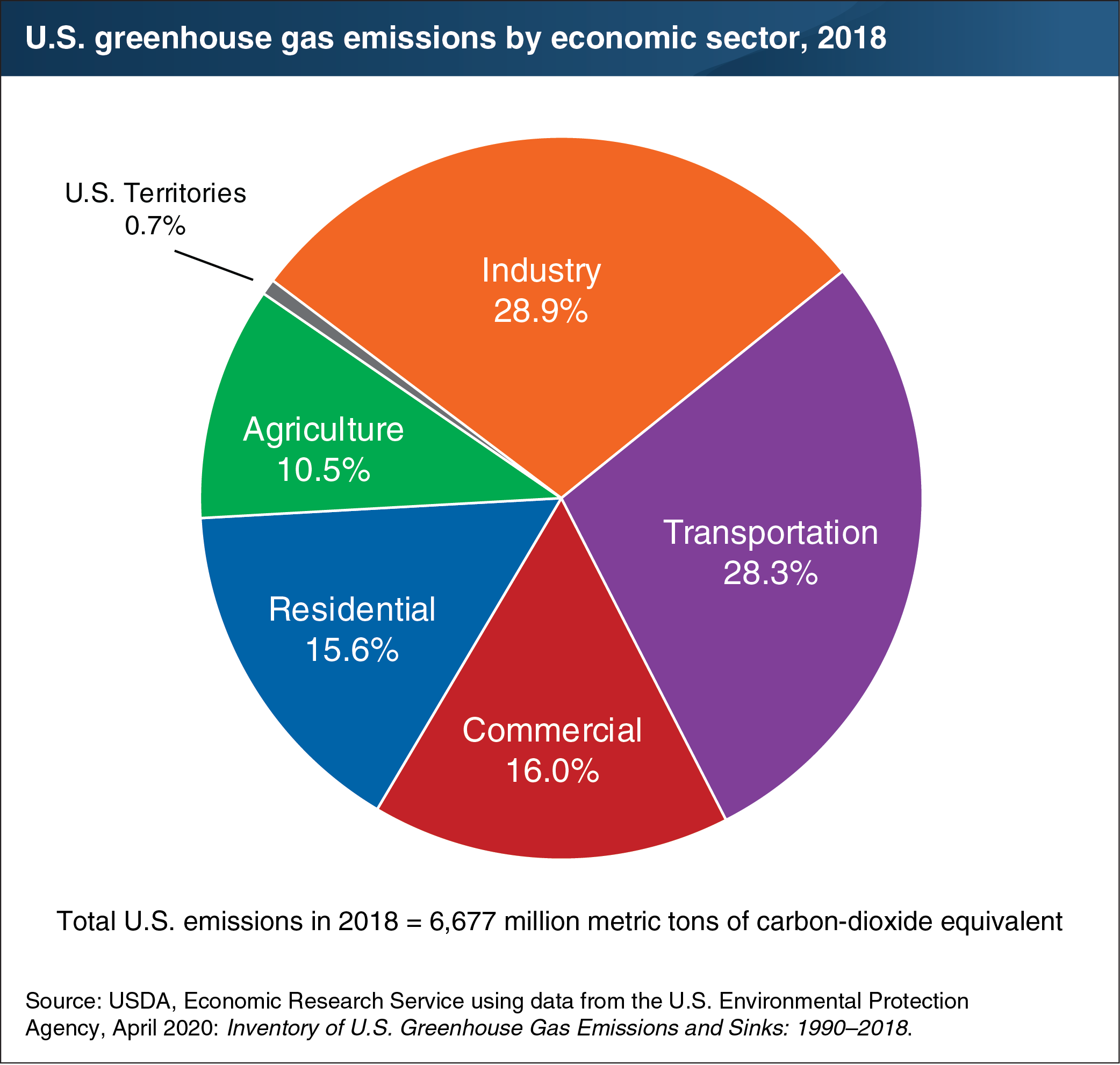Agriculture contributed 10.5 percent of U.S. greenhouse gas emissions in 2018
- by Ron Sands
- 4/22/2020

The U.S. Environmental Protection Agency estimated that agriculture and forestry together accounted for 10.5 percent of U.S. greenhouse gas emissions in 2018. This includes carbon dioxide (CO2) emissions associated with agricultural electricity consumption. The greenhouse gases with the largest contributions to rising temperature are CO2, methane (CH4), and nitrous oxide (N2O). Globally, CO2 emissions are the largest contributor to climate change. However, the emissions profile for agriculture differs from that of the economy as a whole. U.S. agriculture emitted 698 million metric tons of carbon-dioxide equivalent in 2018: 12.3 percent as carbon dioxide, 36.2 percent as methane, and 51.3 percent as nitrous oxide. Increases in carbon storage (sinks) offset 11.6 percent of total U.S. greenhouse gas emissions in 2018. Carbon sinks include forest management to increase carbon in forests, increases in tree carbon stocks in settlements, conversion of agricultural to forest land (afforestation), and crop management practices that increase carbon in agricultural soils. This chart updates data that appears in the Economic Research Service data product Ag and Food Statistics: Charting the Essentials.


